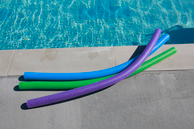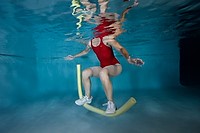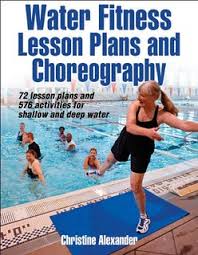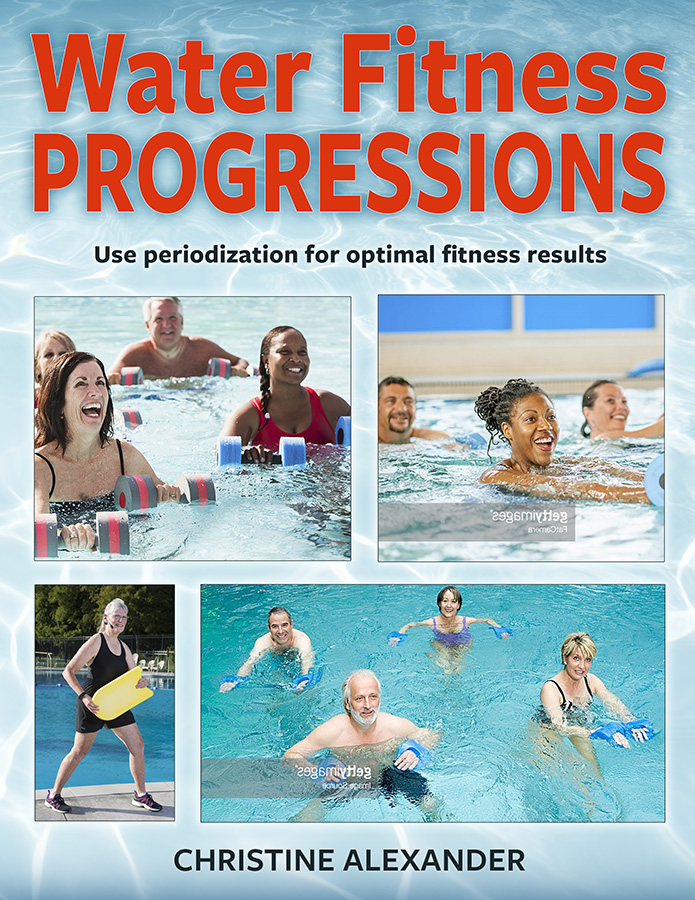
Nearly every pool has noodles. They are inexpensive and available every summer in many different kinds of stores. They come thick or thin, with or without holes in the middle, and in many different colors.


You can also spend more for denser noodles from Hydro-Fit or square Sqoodles from AquaJogger. These provide more buoyancy, resistance and support than the regular pool noodles.
The uses for pool noodles are almost endless. Hold them in the hands for upper body strength training. Sit on it like a swing, wrap one around your lower back, or ride it like a bicycle for suspended exercises. Recline on the noodle lengthwise for crunches. Stand on a noodle for lower body strength training and balance work. Noodles are also great for partner work. If you have more than one type of noodle to choose from, the noodle you use for a specific exercise will depend on your goals.

Upper Body Strength Training.
if your focus is muscular endurance, use the smaller noodles and perform more reps. If your focus is muscular strength, use the more buoyant noodles and perform fewer reps. Hold the noodle with your hands shoulder distance apart. If the hands are too narrow, the shoulders are rounded. If the hands are too wide, the shoulder blades are out of neutral. Some exercises you can do are row, push forward, push down, triceps extension, push-ups leaning forward with the toes on the floor or suspended, and burpees. For a video demonstration of how to do burpees in deep water, click burpees. In shallow water, jump up instead of flutter kicking to elevate the shoulders. Use one hand to press a noodle down, or perform jumping jacks or cross-country ski. Hold the ends of the noodle like a rainbow and touch the ends in a chest fly, or hold the ends together and perform shoulder flexion. Wrap the noodle around your waist, hold it in that position with your elbows and perform a rotator cuff sweep.



Suspended Exercises.
For suspended exercises, a smaller noodle will work, but the denser noodles provide more support. Sitting on a noodle like a swing challenges balance. In this position you can perform seated kicks, unison kicks (mermaid), seated jacks with legs straight, bent knee jacks, seated leg press, bicycle, flutter kick, point and flex the feet, and hip hike. You can do most of the same exercises with the noodle wrapped around your lower back (also called positioned in a posterior sling) which provides more stability. Do not position the noodle in the arm pits because that causes impingement in the shoulder joints which may lead to a rotator cuff tear. With the noodle wrapped around the lower back do a waist twist instead of a hip hike. Try a Pilates move, such as single leg stretch (see the center photo). Stretch the arms side to side and you can do side-lying moves such as bicycle, jog, flutter kick and cross-country ski. If you want to do suspended travel, sitting on a noodle like bicycle is the way to go. You can bicycle, or reverse pedal to go backward, and travel with seated jacks, seated kick and cross-country ski. Cross the ankles and row using only the arms for canoe races.

Recline on the Noodle.
If I’m going to do crunches, this is the noodle position that I prefer. Reclining on the noodle puts you in the correct position to perform crunches. Focus on bringing your chest toward your knees which contracts the abdominals rather than bringing your knees to your chest which works the hip flexors. Participants with osteoporosis should not do crunches because forward flexion compresses the discs of the spine and may cause microfractures. This is why I seldom do crunches with my classes. More often we focus on core stabilization. Put the noodle between the knees, then raise and lower the knees until you find neutral.

Stand on the Noodle.
With lower body strength training, the smaller noodles are best for focusing on muscular endurance, and the more buoyant noodles are best for improving muscular strength. The Sqoodle is easier to manage under the feet because of its flat surfaces. Put one foot on the noodle and perform a leg press in front to work the quads, hamstrings, glutes and calves. Perform a leg press to the side to work the inner thigh. Keep the leg straight and perform a small hip extension for the glutes; the noodle flies out from under the foot with a larger hip extension. Perform squats standing on the noodle with both feet. Do a reverse squat by lifting the feet (and the noodle) off the floor. Lift one foot at a time and use the noodle like a stair climber. Stand on the noodle and drop the toes to the floor for the calves and the heels to the floor for the tibialis anterior. Balance with one foot on the noodle and the other leg lifted in front or extended to the back.

Partner Work.
Noodles are great for partner moves. For a partner bicycle ride, have one participant sit on the noodle like a bicycle while her partner wraps the noodle around her chest, becoming the handle bars. The partner in front runs while the one in back bicycles. Make a train by having four or more participants wrap their noodles around their chest; the ones in back hold the ends of the noodle of their partners in front. The partner in front is the train engine. Everybody runs to one end of the pool, Then the train engine goes to the back of the line to become the caboose, and a new engine leads the train back to the starting point. If you have several trains, turn it into a race, and keep going until everyone has had a turn being the engine. A variation is to have four or more people straddle their noodles and put the ends of the noodle of their partner in front between their knees. Now you can have crew boat races with everyone rowing. Let the last person in the boat call out the strokes. Create a centipede by having everyone straddle their noodles and get in a line one behind the other. Each person uses their hands to hold the end of the noodle of the person in front. Everyone bicycles while the person at the head of the line performs a breaststroke and leads the centipede in circles, or spirals or zig zags.
This list of noodle exercises is not exhaustive. You can find lesson plans with noodle exercises in both of my books, Water Fitness Lesson Plans and Choreography and Water Fitness Progressions. The first book is out of print, but you can find copies on Amazon, or get it as an e-book. If you have a favorite noodle exercise, put it in the “Leave a Reply” box below.


See you in the pool!

Chris Alexander

Leave a Reply